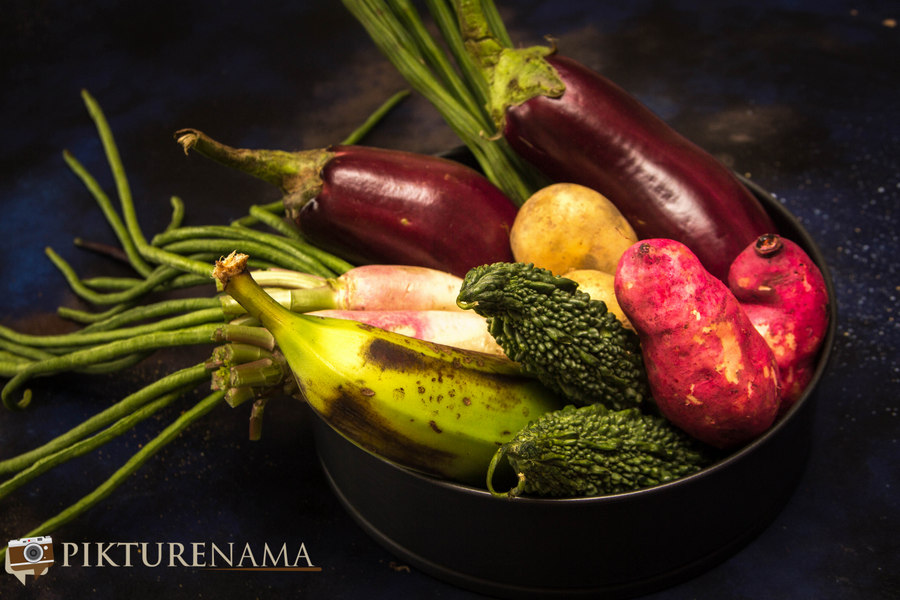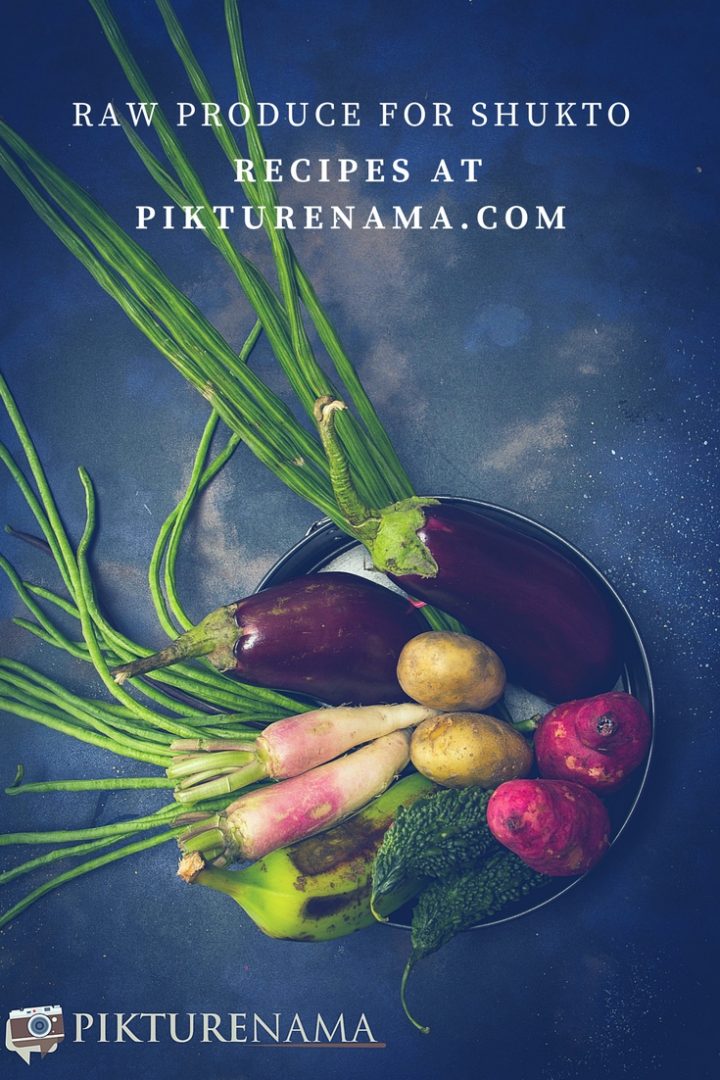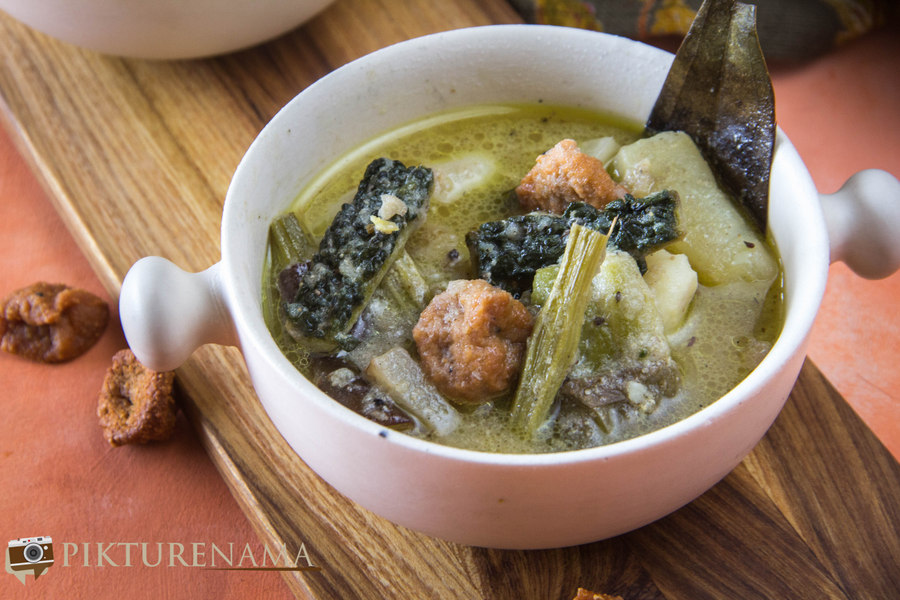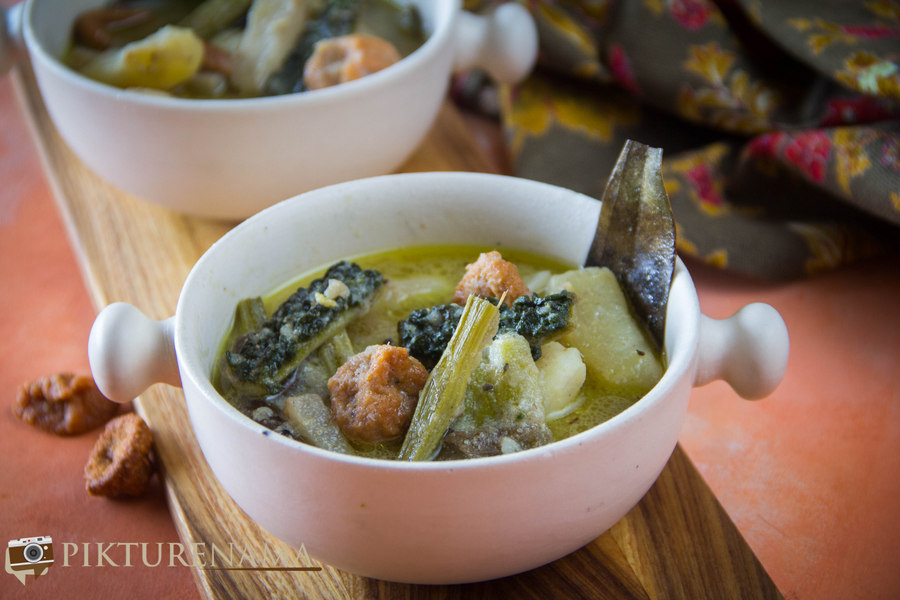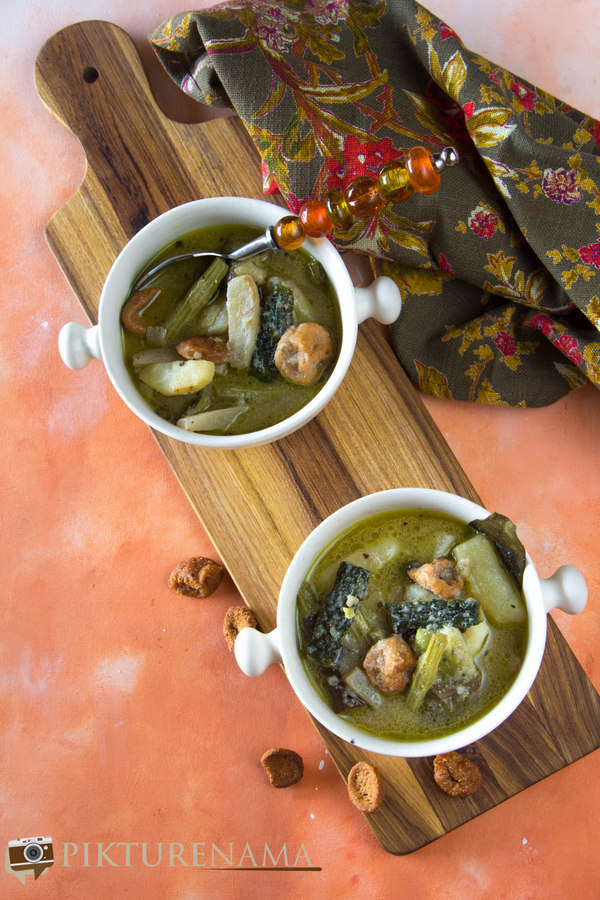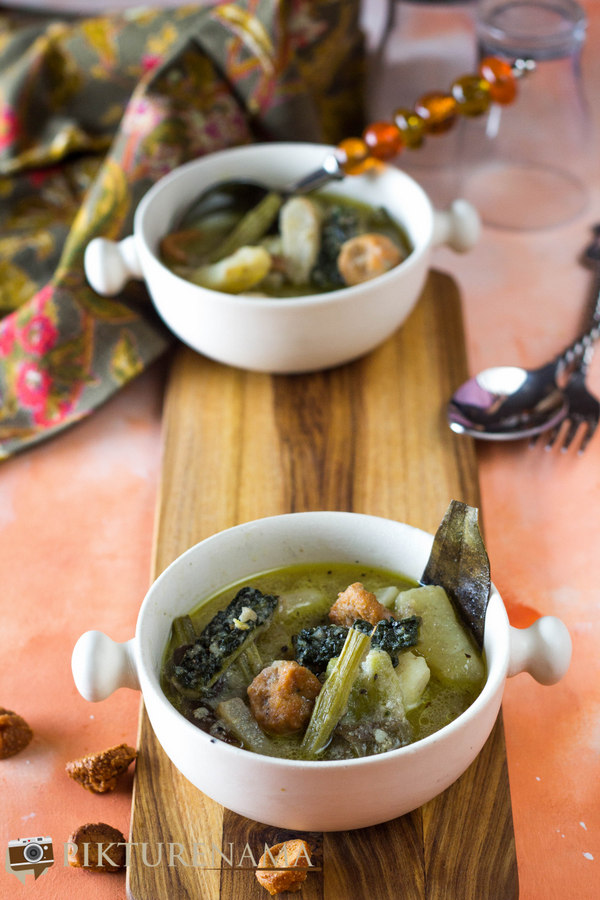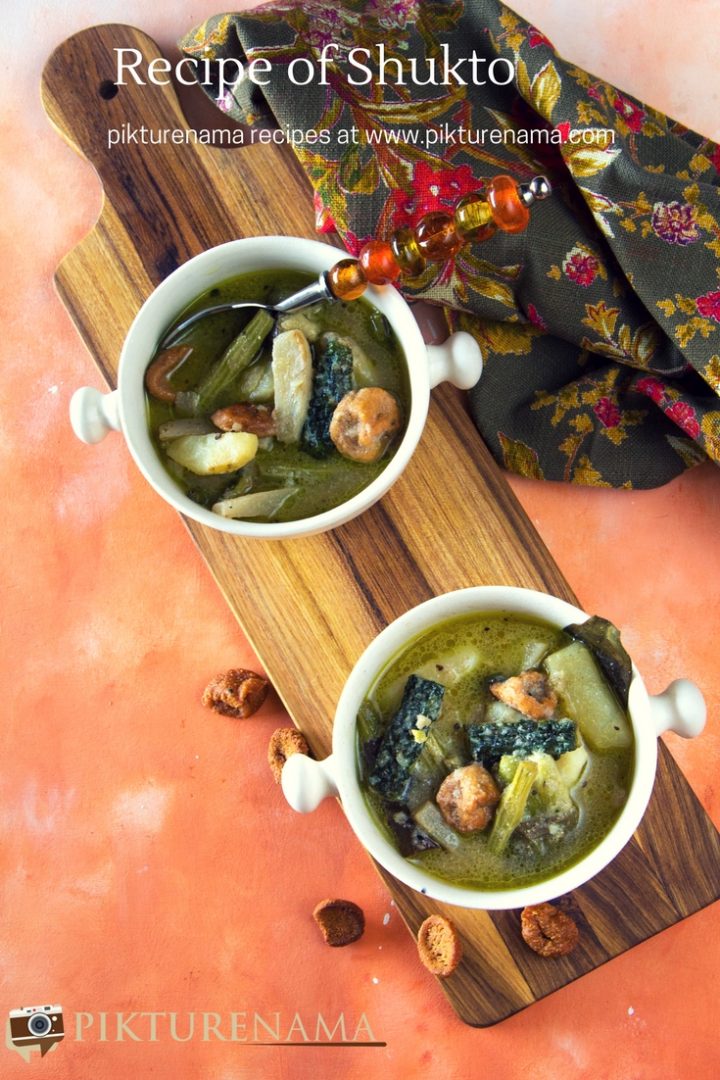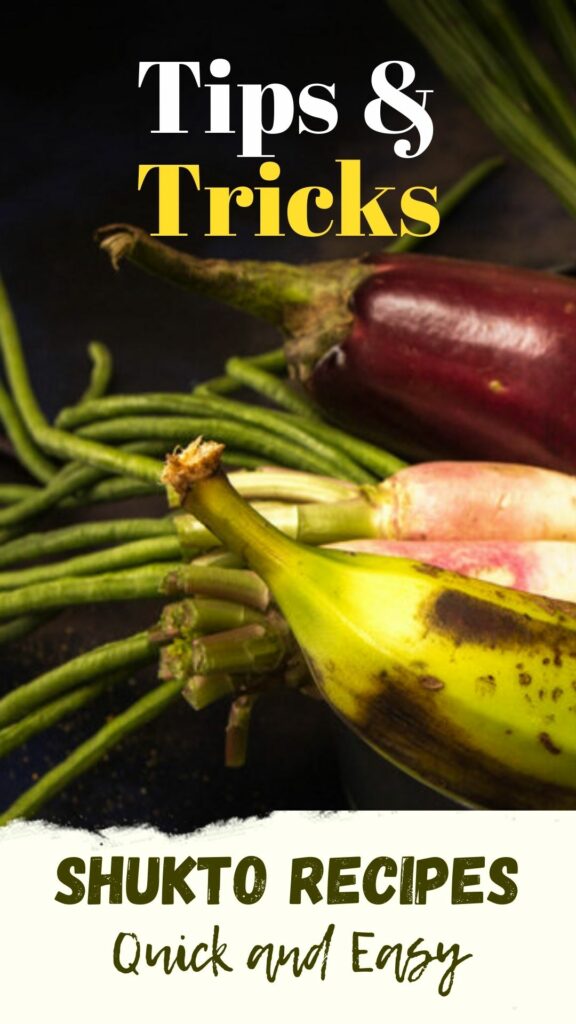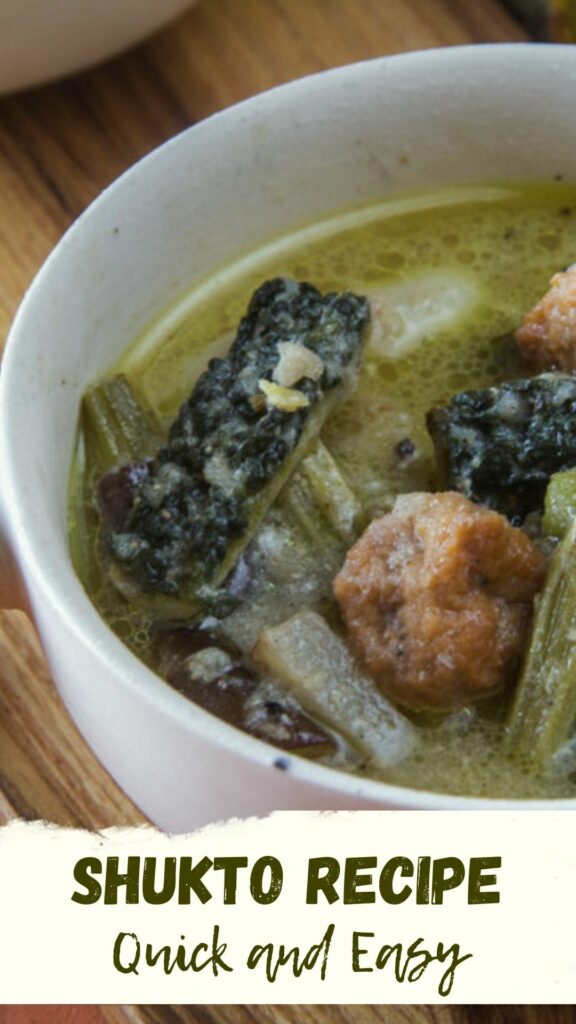We have to start on a flashback for this story. The stage is like Mid 80’s to 90’s Bengali wedding reception where buffet was still not popular and one used to get a menu card which would boast about the line up for the meal just as they display the playing Eleven’s name in TV before a cricket match. So when you go through the names, stereotype perceptions flash in your brain. Koraishutir Kochuri – won’t eat more than 1, Kashmiri Alur dom – 2 pieces but a repeat of the gravy, Vegetable chop – 1 piece just to check out whether this is as good as the para r dokan (neighborhood shop), fish fry – if it’s too thick – one bite and leave it so that you can devote more time and energy and space to Mangsho ( mutton ). One amongst all this was slightly unpredictable yet indispensable – Shukto.
For a long time, I wanted to start writing on Shukto asking a question if Shukto can be someone’s muse? Bengalis dangerously fall in love time and again with Ilish Macch year on year as an addiction, knowlingly that it will only leave a hole in the pocket without the desired outcome of taste. Bengalis love or rather lust over Mangsho or Mutton, chicken is yet to get that cult status but Shukto?
Shukto comes as the defining character of a meal. A palate cleanser, it’s like a true Bengali sizzler without the sound of the sizzle. As Chitrita Banerjee writes in her book Bengali cooking – The term is derived from medieval Bengali Shukuta, meaning the dried leaves of a plant, usually the bitter juice plant. These leaves were stored throughout the year and used to make a bitter dish with seasonal vegetables. From the mythical Shiva in the narrative poems to historical figure of Chaitanya, medieval Bengalis loved shukto and all the more so because it was believed to be an antidote for excessive mucus in the gut – a sign of dysentery.
If you are a fan of Shukto then you cannot miss out on this variation also. Kolmi Shaker Borar Shukto
Abundance of vegetables with no limitations or rules as such makes this is so interesting. If it is summer, then put in summer vegetables and if it is winters, add on winter vegetables. When had with Gorom Bhat (hot steaming rice), presence of so many vegetables, like drumstick, green plantain, sweet potato, brinjals, raddish, long bean or borboti and obviously the Boris (fried lentil nuggets) make each morsel a surprise package. There are people who would have an entire meal with this. The king is bittergourd and it’s surprising that inspite of bitter taste, this dish is so hugely popular amongst Bengalis. Since the time I have been thinking of writing about #Subzitarkaridin, which is organinzed by Rushina Gildwal – I had this on my mind. Which other vegetable preparations of Bengalis command such a respect? Alur Dom is popular, Dhokar dalna is ethnic but Shukto is a class in itself. Will I be too wrong if I compare Shukto with the great yesteryear Bengali actor Late Kamal Mitra? His screen presence was towering and in most Uttam Kumar starrers, he played the father with a rich heritage of values and family traditions to be passed on.
When I asked the question whether Shukto can be someone’s muse, I was proved wrong. Friends came back saying it is like the nuance performer which Nawazuddin Siddiqi or Irfan Khan are. Pritha Sen, the food historian feels that it’s the ultimate muse as one aims perfection with it. One friend also said so that his two grandmothers were from two parts of Bangladesh and both cooked Shukto in different ways and someone also said that whenever her Mother or mother in law came to stay with her, she would make them cook Shukto every weekend. Ancient Indian food history writer Tanushree Bhowmick, who runs her facebook page Forktales had written this poem on Shukto which is essentially the recipe in itself.
Like the recipe ? Save it in Yummly ? Yum
আমার মা এর মাসীমা
এমন ভীষন ডাকতো নাক
পাশে সুলে, চোখ খুলে
ঘুম হতো চিচীংফাঁক
কিন্তু যতই করো রাগ
দুপুরে মাফ সাত খুন
যখন পাতে, গরম ভাতে
শুক্তো দিতো নতুন দিদুন
জানি-জানি, প্রণালী চাই
দিচ্ছি, একটু দম ধরো
বলছি আমি, তোমরা আগে
কলম-খাতা বের করো
সর্ষে তেলে ভেজে তোলো
মটর ডালের বডি গুলো
শাঁতলে রাখো আলূ, উচ্ছে
ভাপিয়ে রাখো পেপে, মুলো
কী বললে? আনজপাতি
কেমনি কাটলে হবে ঠিক?
ঝিঙ্গে, পটল, মিষ্টিকুমড়ো
মোটা কিন্তুলম্বা যেন মচস্টিক
আর কী দেবে? যা ইচ্ছে দাও
আমার তাতে কী বা যায়?
কাঁচকলা দাও, সজনে ডাটা
গরম কালে যা যা খায়
সর্ষে তেল আর একটু ঘী
দু মিশিয়ে গরম করো
রধুনী আর কাঁচালংকা
ফোডন দিয়ে, হেচে মরো!
উচ্ছে বাদে, আনজপাতি
উল্টে দাও কড়ার মাঝে
নুন মিশিয়ে, সাঁতলে নিয়ে
দু মিনিট দাও অন্নো কাজে
মিশিয়ে দেবে জীরে গুড়ো
ভাজা উচ্ছে আর বাটা আদা
ঢাকার আগে চিনি দেবে
বাঙ্গলরা কম, ঘ্টী হলে, এক গাদা
সর্ষে বাটা দিয়ে, ডূবো জল
ঢাকনা দিলে ফুটবে শিগ্গিরি
সেদ্ধ আনাজ খুন্তি সাথে
করবে না কো দাদগিরি
একটু খানি চালের গুড়ো
অল্প দুধে গুলে নিয়ে
ফুটিয়ে নেবে টগবগিয়ে
শুক্তো টা তে ঢেলে দিয়ে
এবার বাকি অল্প কাজ
ভাজা পাঁচফোডন গুড়িয়ে নাও
ওই ছিটিয়ে, ঘী দিয়ে
একটু ঢেকে নামাও আর খাও
কেমন খেতে? বলছি শোনো
আমার দিদির আইবুরো ভাত
সবাই মাছ ছেড়ে, মাংসো রেখে
এই শুক্তো খেলো শপাত-শপাত
Baba loved shukto, Ma doesn’t that much. I am a fan of shukto and perhaps Baba would have been very happy to join his grandson over lunch as Tugga loves eating shukto and somewhere, just as his father and grandfather used to do – begs, borrows or steals the Boris from the shukto.
Are you following us on our youtube channel Cook with Pikturenama? If not, then please subscribe.
Here is a playlist for traditional Bengali recipes that you can try at home –
https://youtube.com/playlist?list=PL9u0z4DNJz0HRJZ0d1RYjDaHsVA9hKRoJ
Do try this recipe and share your feedback. You can reach out to us at our social media handles: Instagram, Facebook or any of our personal Facebook (Madhushree and Anindya) and twitter profiles. Post a picture and tag us.
We believe, Shukto is a medley of vegetables in a light stew-like gravy flavored with some essential Bengali spices. Every household has a different variation of the dish. So we have come up with a list of 4 Shukto Recipes you must try –
https://www.instagram.com/p/Crm4fB3pF6f/?utm_source=ig_web_copy_link&igshid=MzRlODBiNWFlZA==
Pin this for your recipe board? Also, you can follow us on Pikturenama recipes for more recipe ideas (Link)
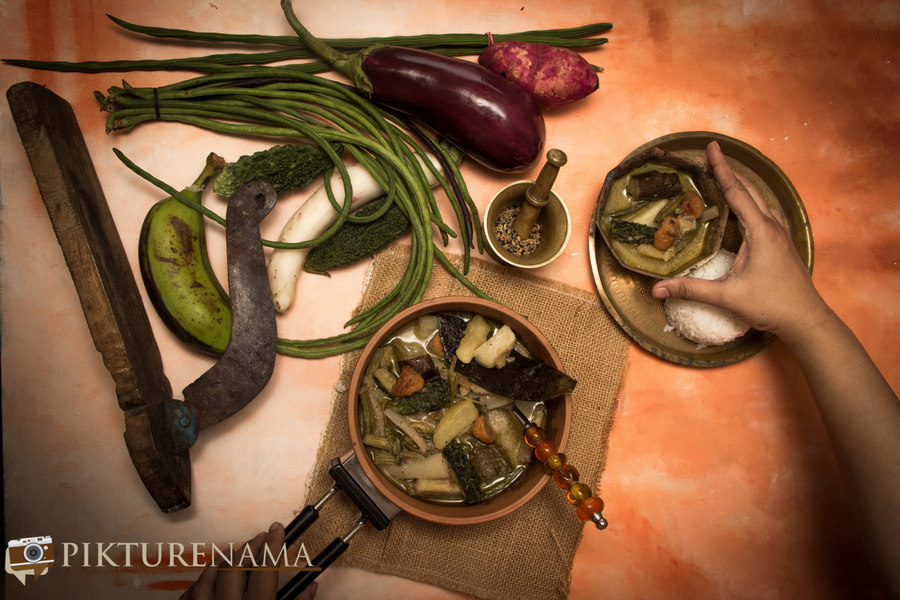
Shukto
Ingredients
- 1 no brinjal
- 1 no bitter gourd
- 1 no green plantain or kanchakola
- 1 no large sized potato
- 1 no sweet potato
- 3 nos drumsticks
- 4 nos long bean or string bean or borbotti
- 1 no white raddish
- 15 nos bori these are lentil nuggets
- 1 1/2 tsp poppy seed paste
- 2 tbsp Mustard Paste
- 1/2 tsp Ginger Paste
- 1/2 tsp radhuni optional
- 1/2 tsp panchphoron Bengali five spice mix
- 1 no bayleaf
- 2 tsp Sugar
- 5 tbsp Mustard Oil
- 2 tbsp Ghee
- 1/2 cup Milk
- 1/2 tsp aata
Instructions
- All the vegetables need to be washed thoroughly. Then all of them need to be cut into one and half inch pieces.
- Heat mustard oil in a kadai. First you need to fry the bori. Here one must be careful to keep the heat at medium since bori fries very quickly. It will take about a couple of minutes for this process. Once fried, keep the bori aside.
- Then fry the bitter gourd till they are a little brown. Keep them aside.
- In the same oil, add the bay leaf and radhuni. When it starts to give out flavour (which is almost instantly), add the potatoes, raddish, sweet potato, plantain, drumstick and long beans. Sprinkle some salt and stir fry the vegetables for five minutes. Then reduce the flame, cover wit a lid and let the vegetables cook in its own juices. Keep stirring from time to time so that nothing sticks to the bottom.
- After about 12- 15 minutes of cooking, add the brinjals. Mix it all up and again cover and cook.
- While the vegetables are cooking, you need to add a 2 tbsp of water in the mustard paste. Then through a fine sieve, strain the mustard paste so that you are left with only the flavoured water.
- About 20 minutes into the cook, add the bitter gourds and the bori. Then stir in the mustard water, poppy seed paste and sugar.
- Add about 3 to 4 cups of water and let it simmer. At this point, crush the panch phoron in a mortar and pestle. Take a small skillet and add 2 tbsp of ghee. When the ghee is hot, add panch phoron powder. When the spices have been tempered, add this to the simmering vegetables.
- Check the seasoning and add more salt if required.
- Finally, in half a cup of milk, stor the ginger paste and the aata and add this slurry to the vegetables. Give it a boil and your shukto is ready.

